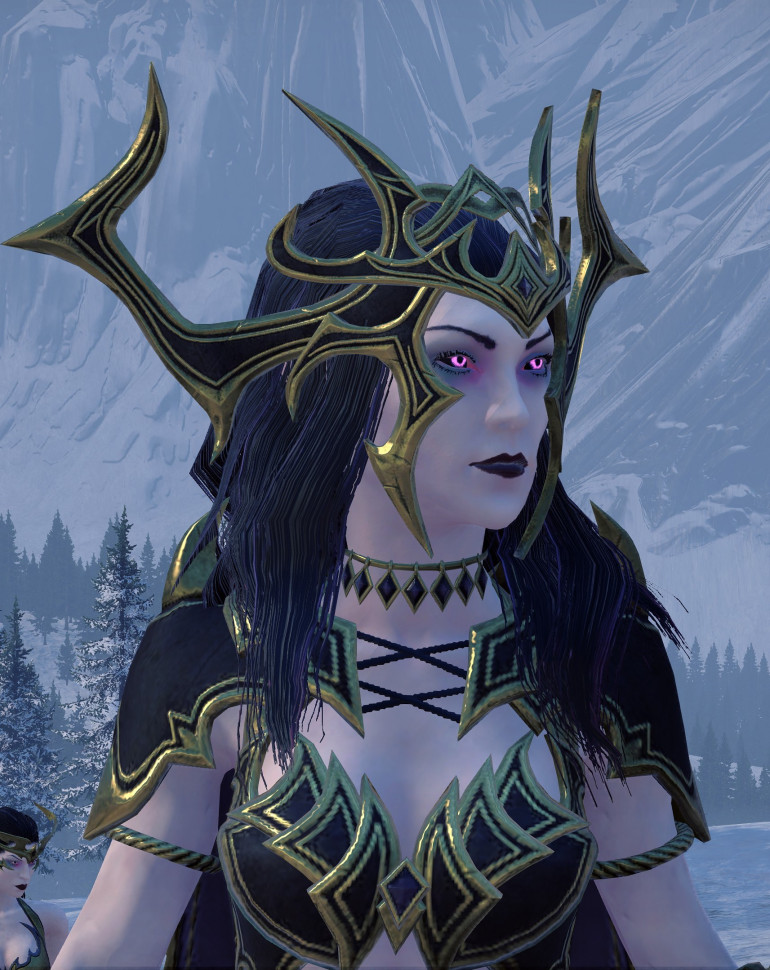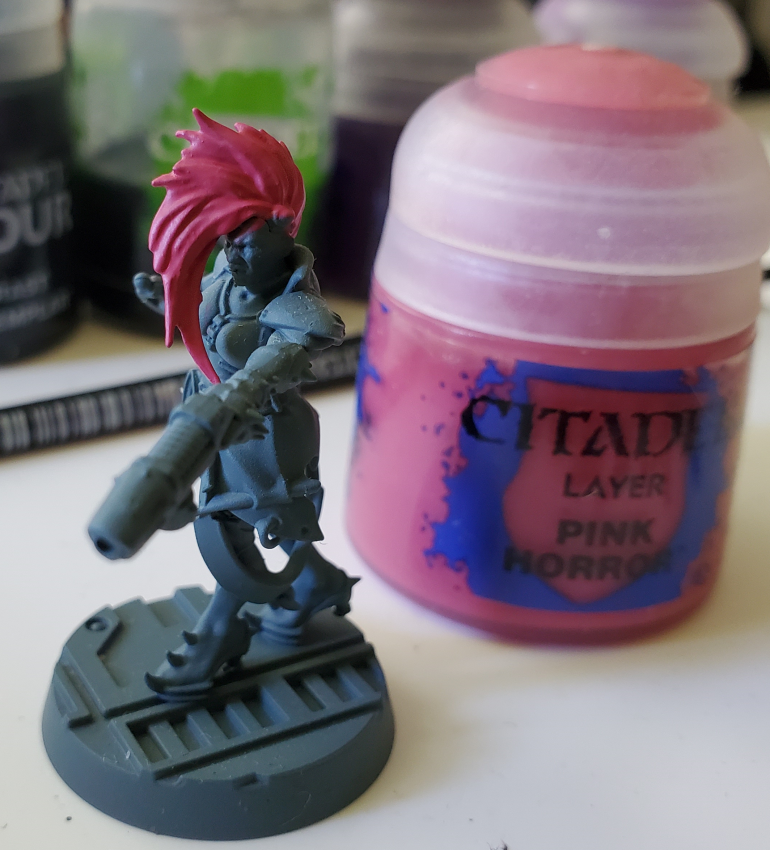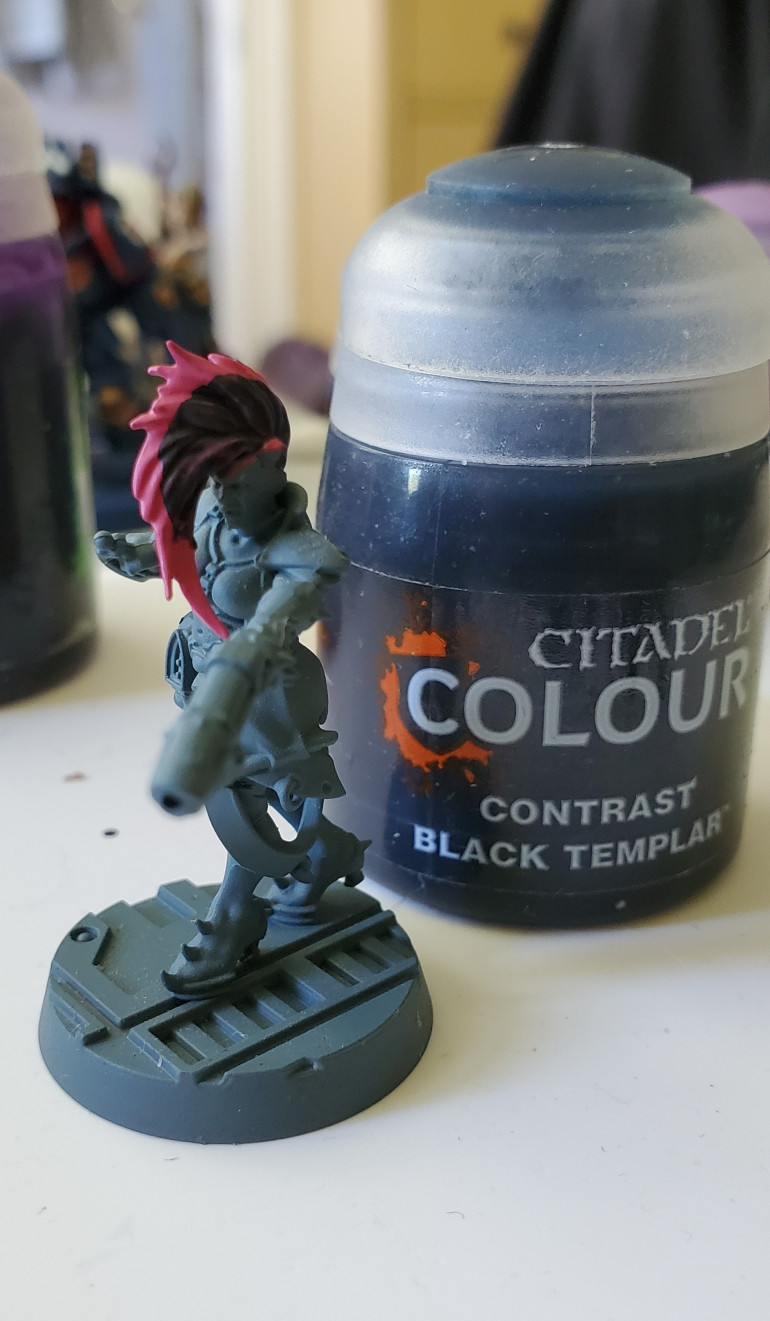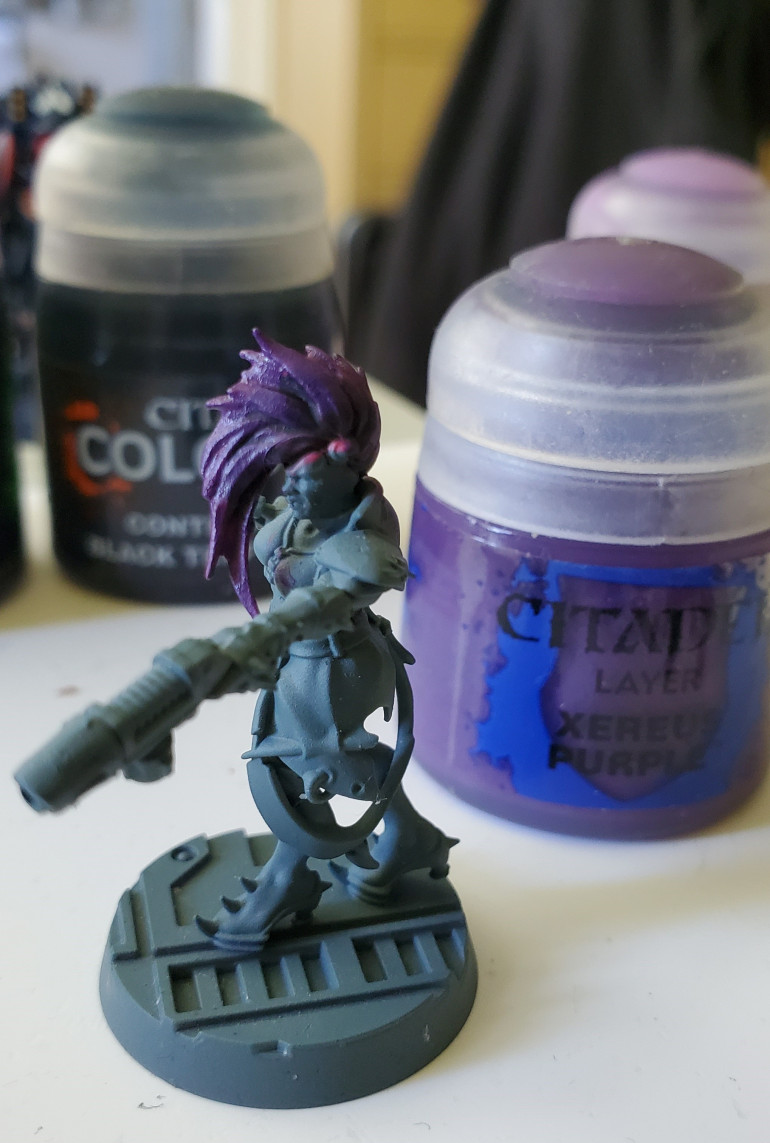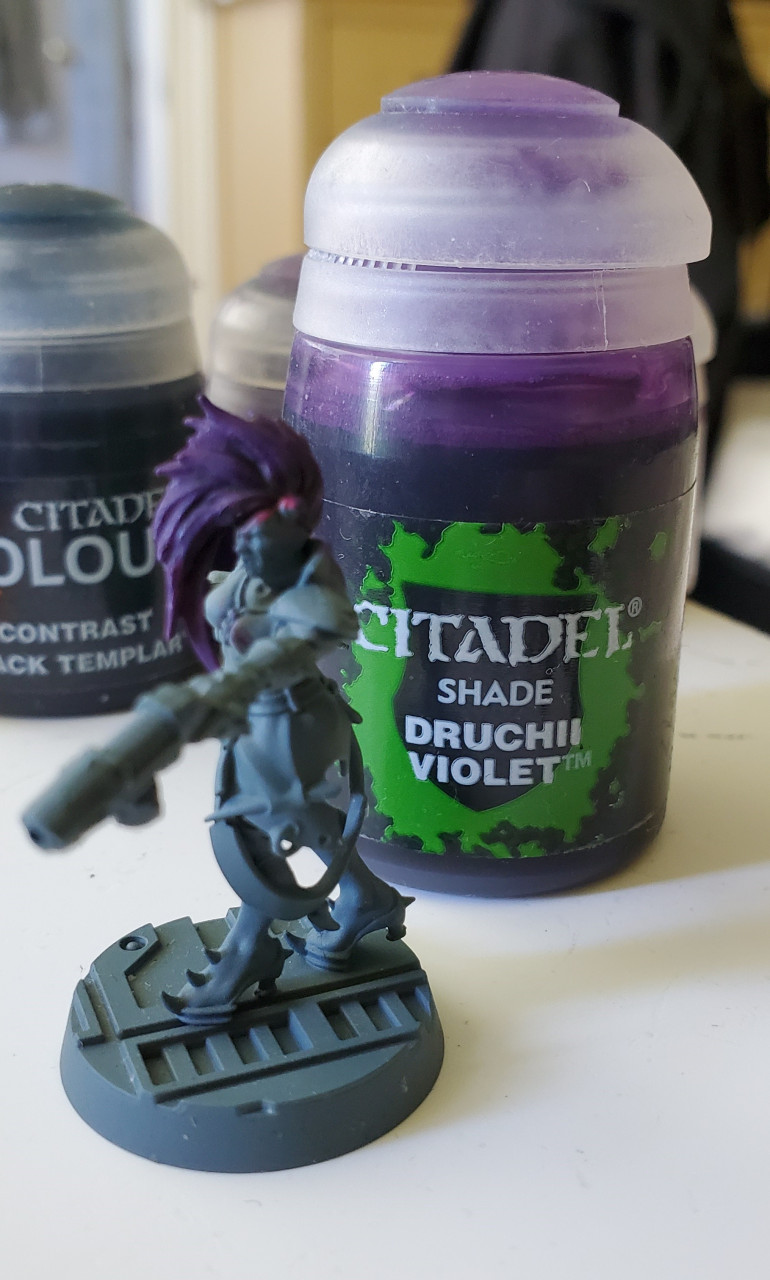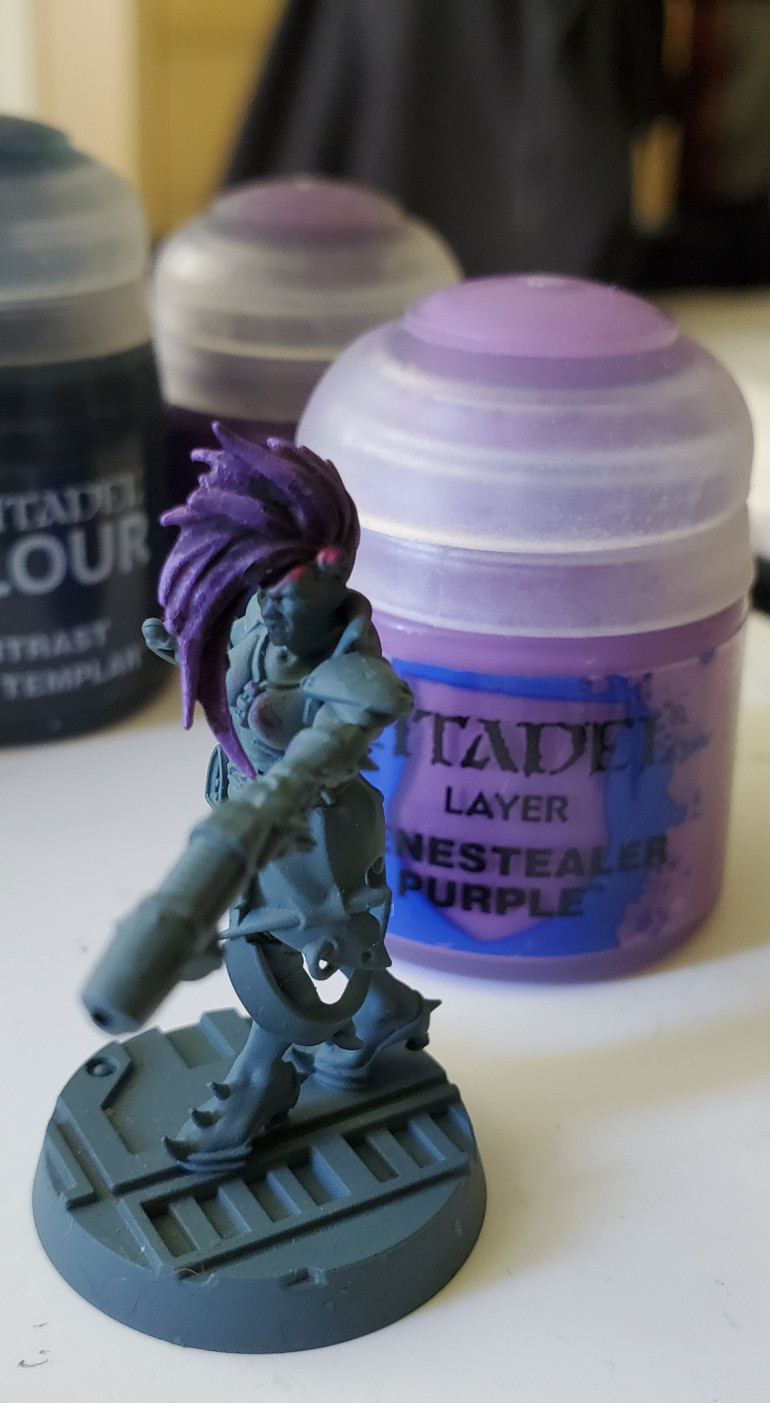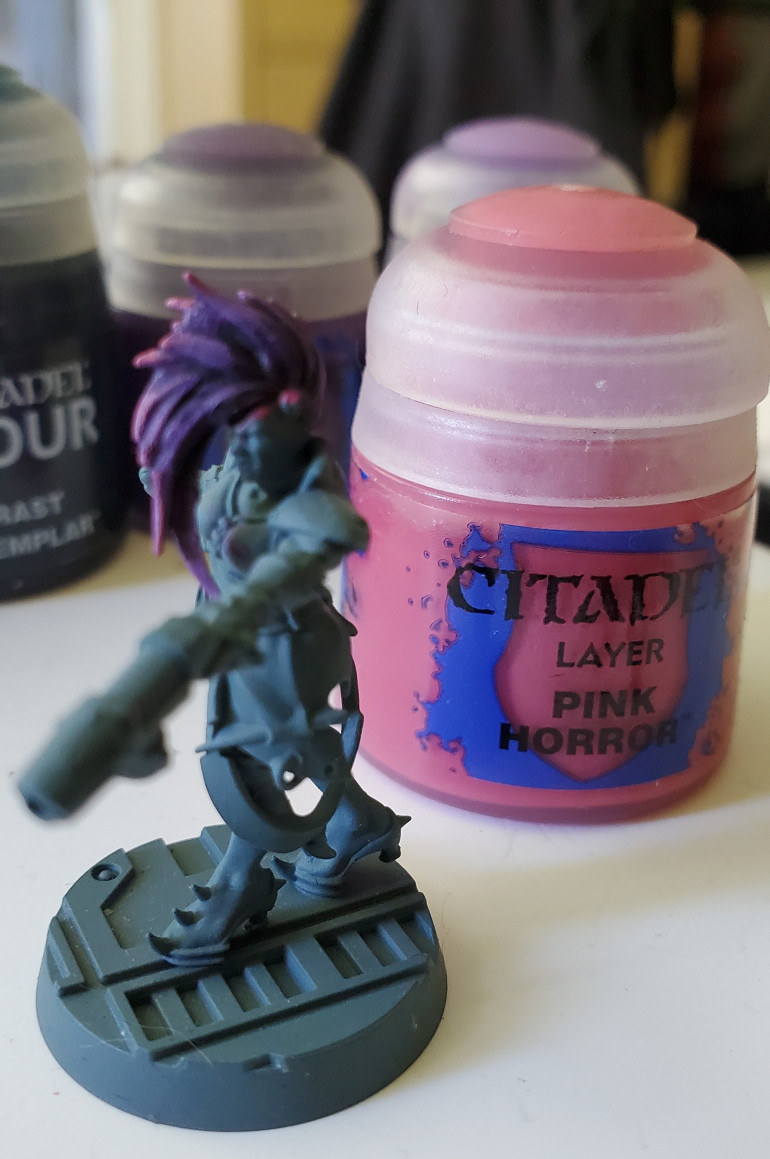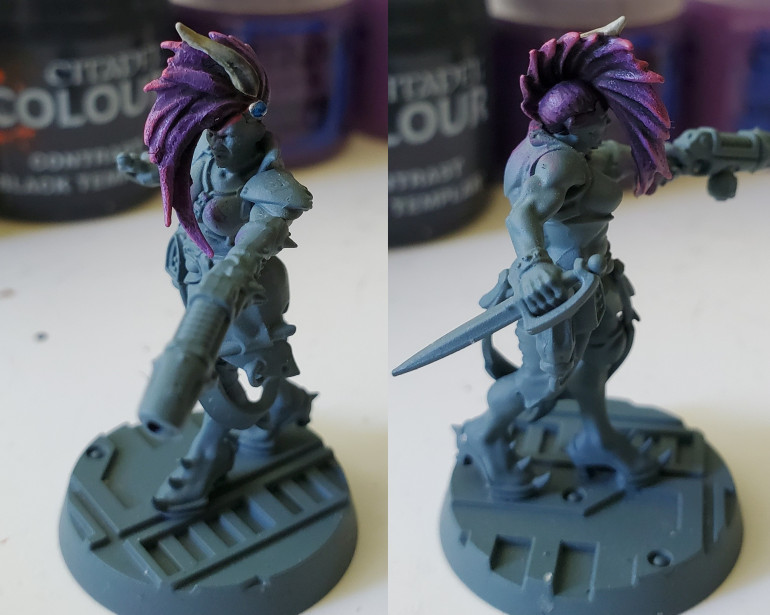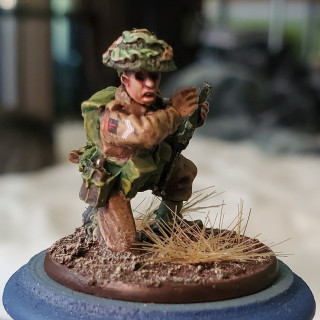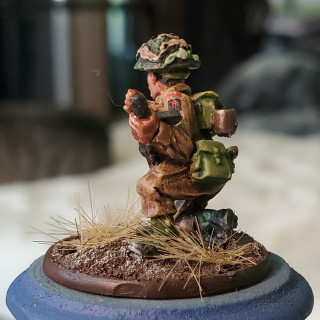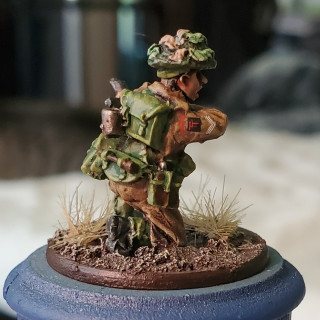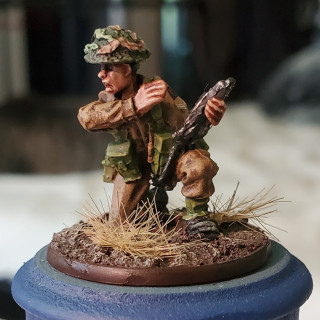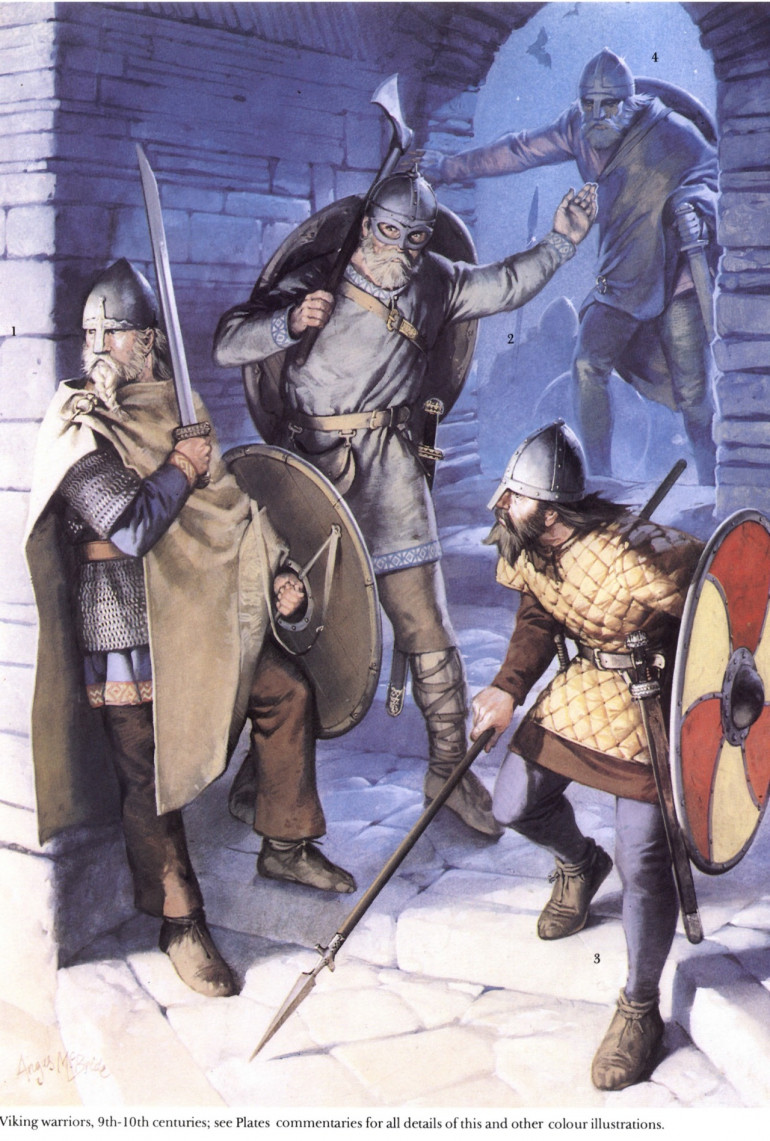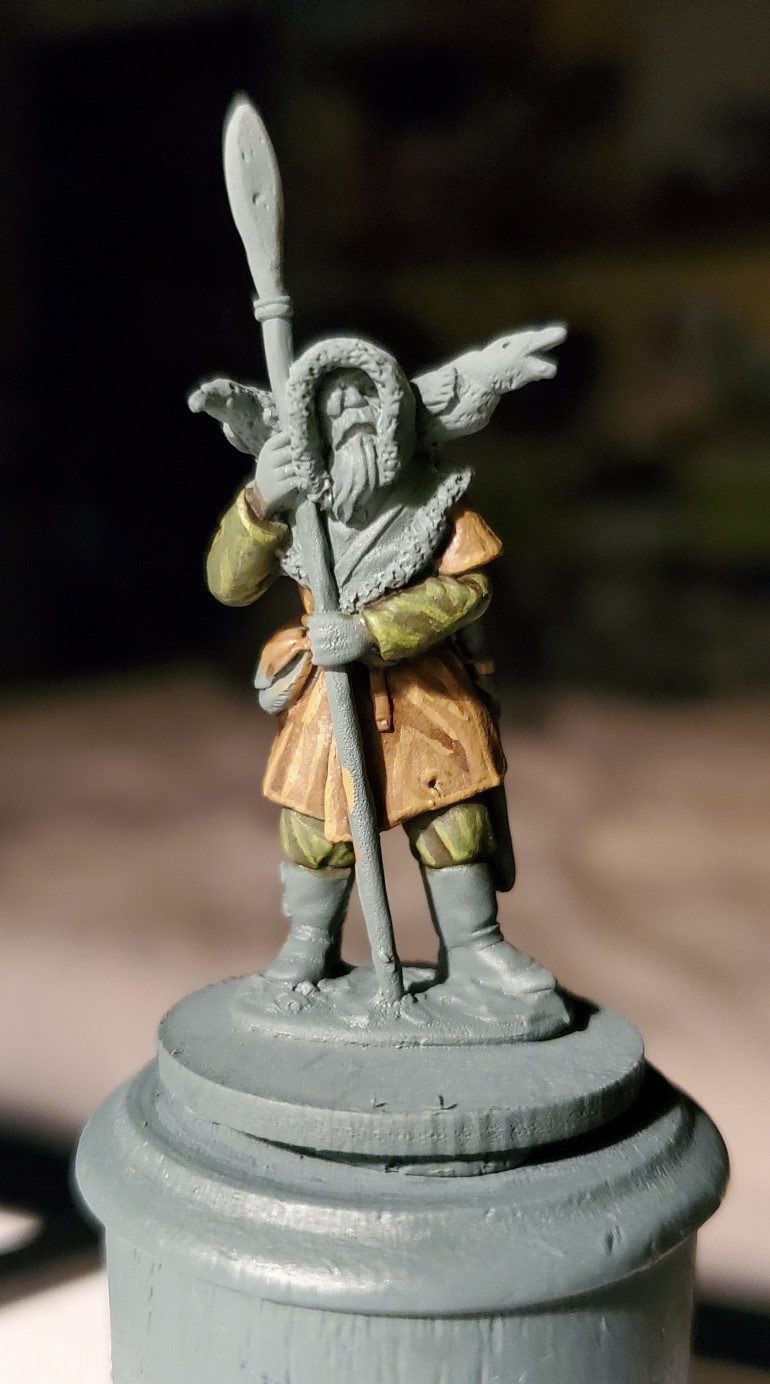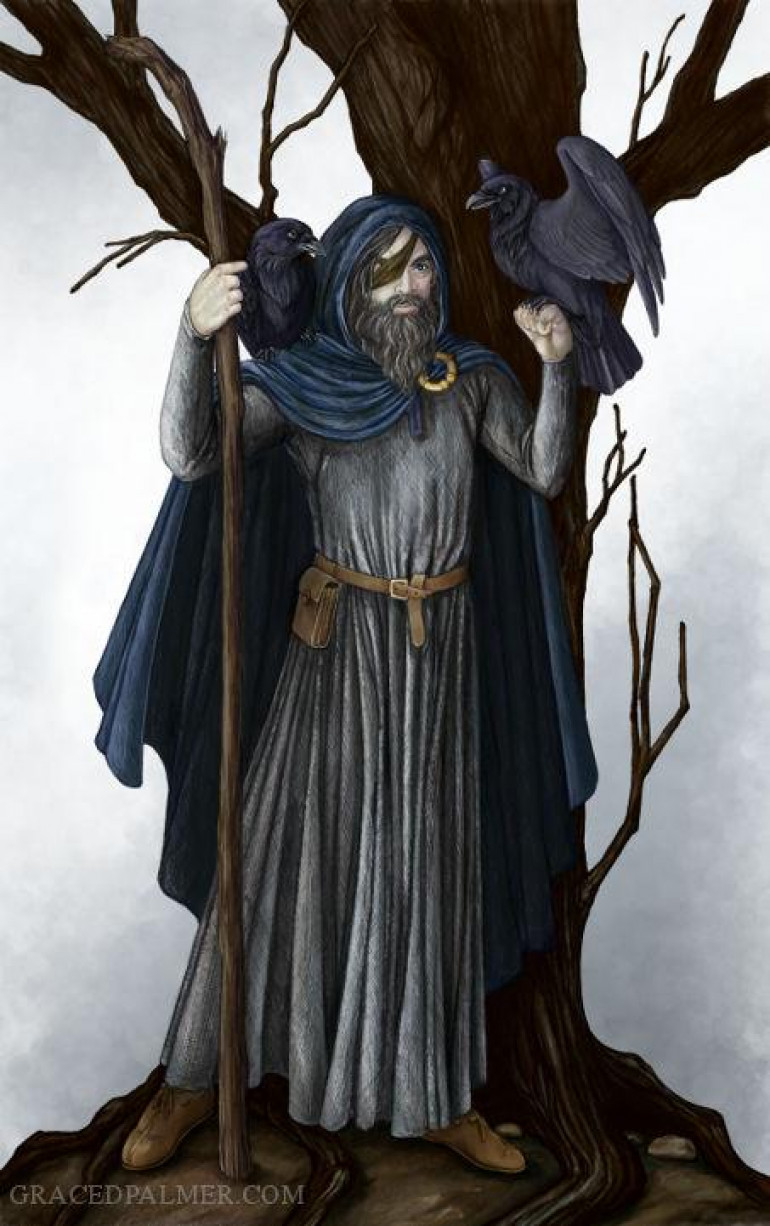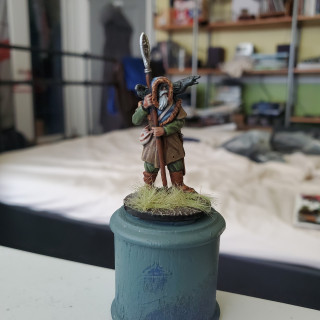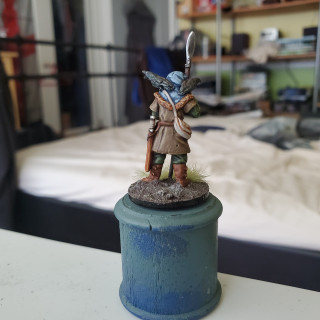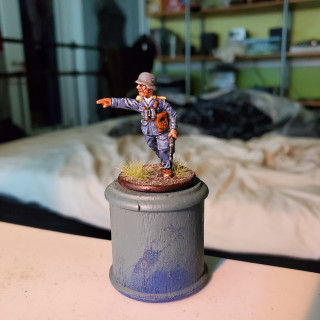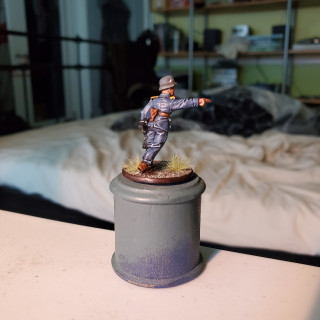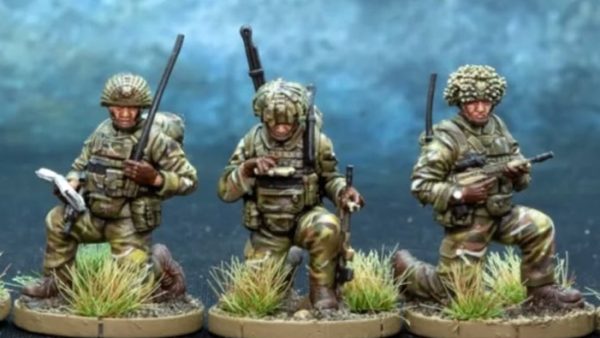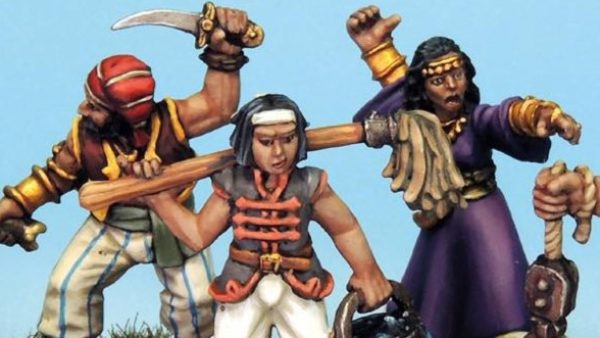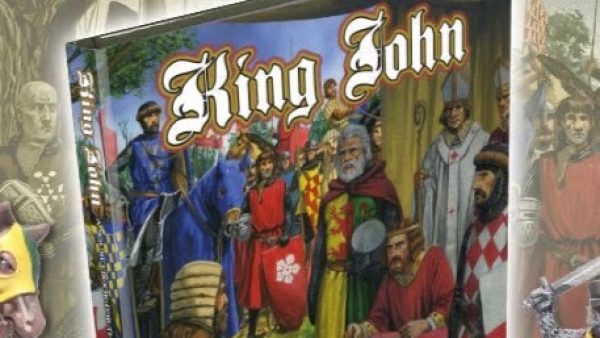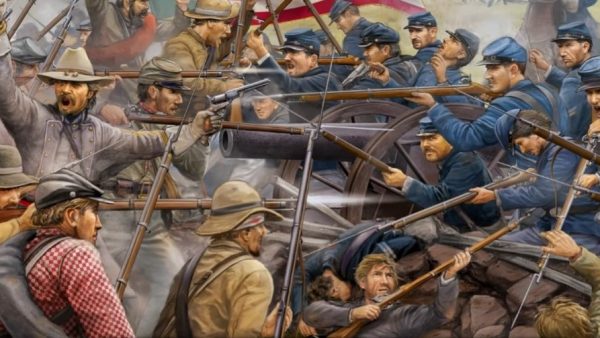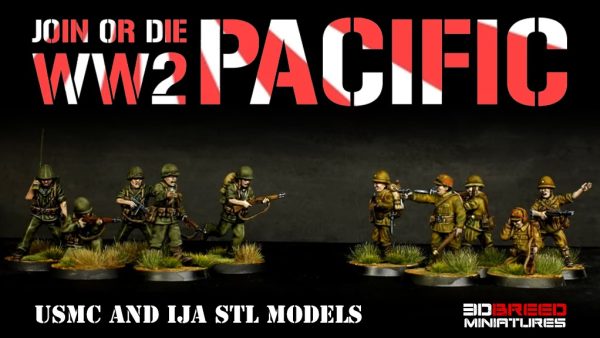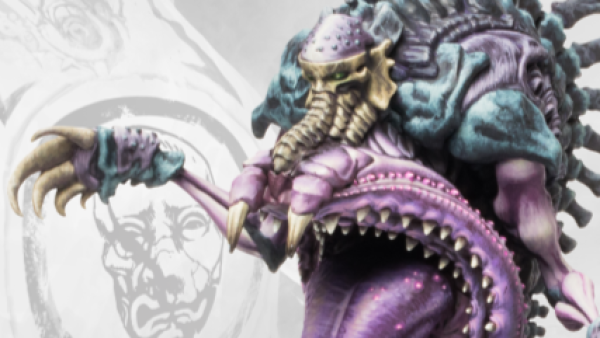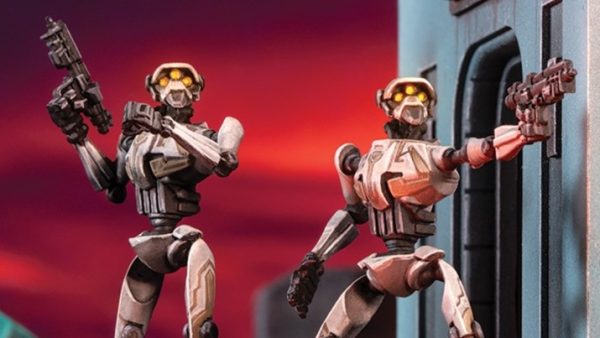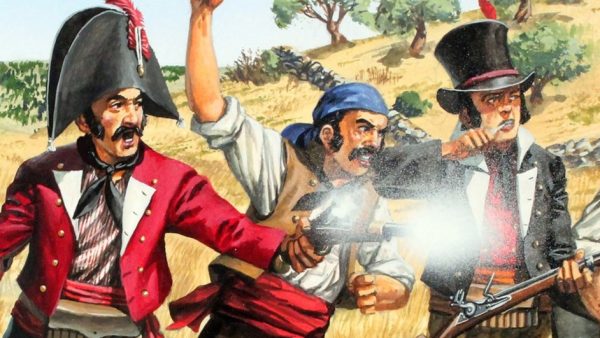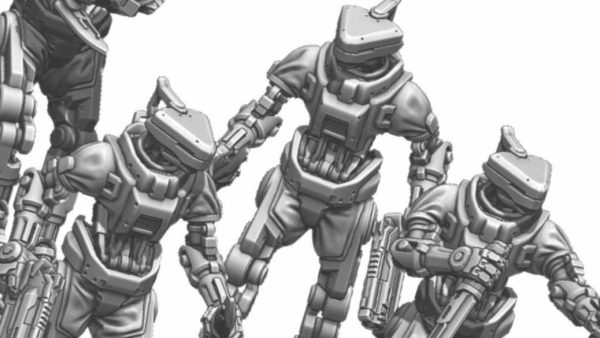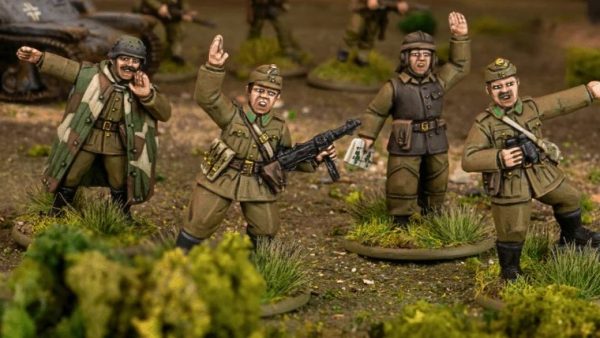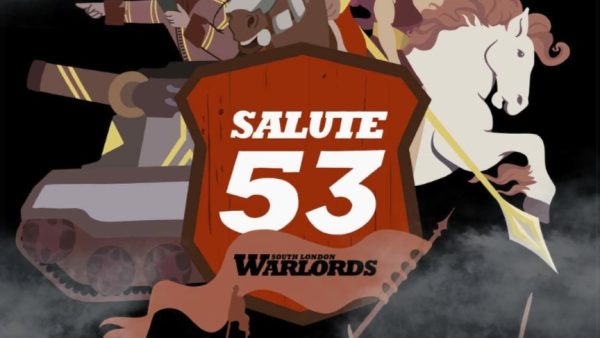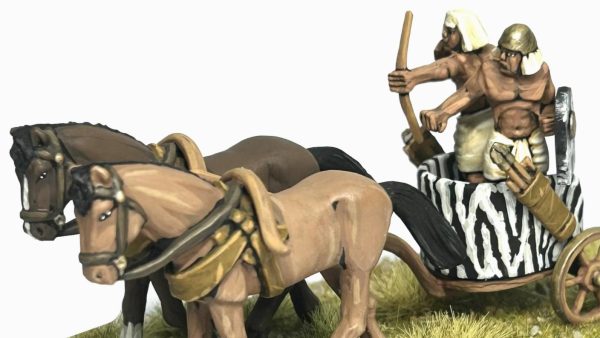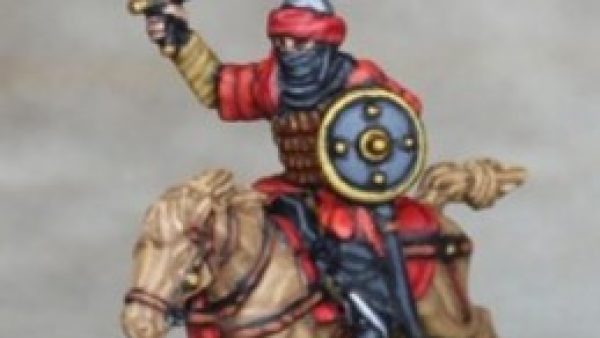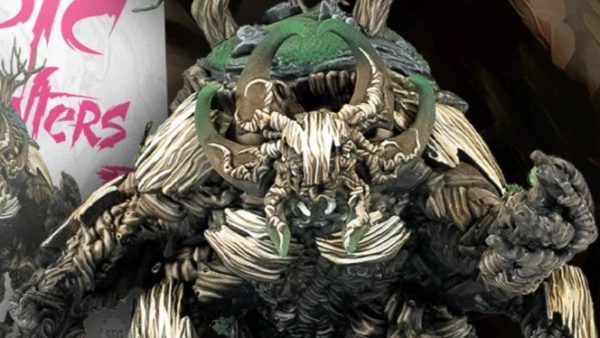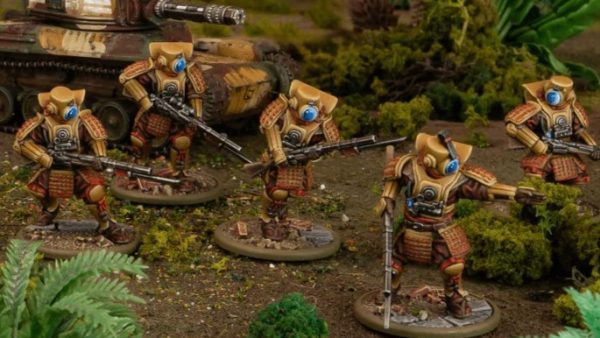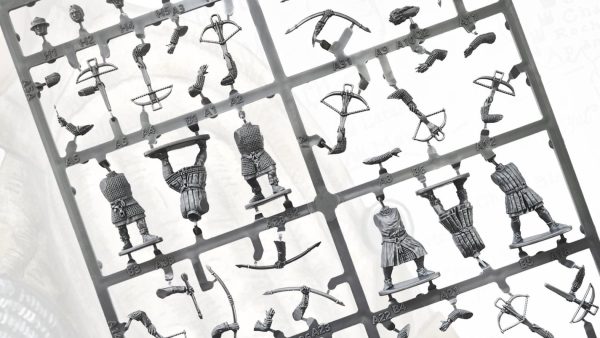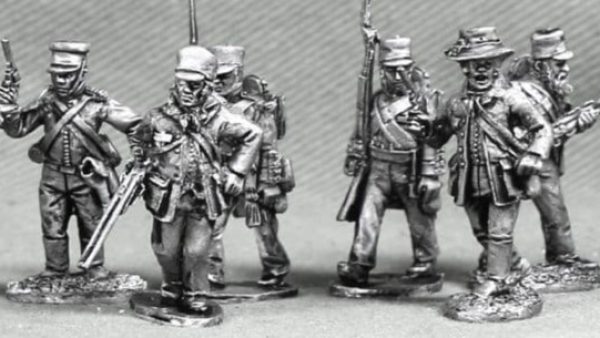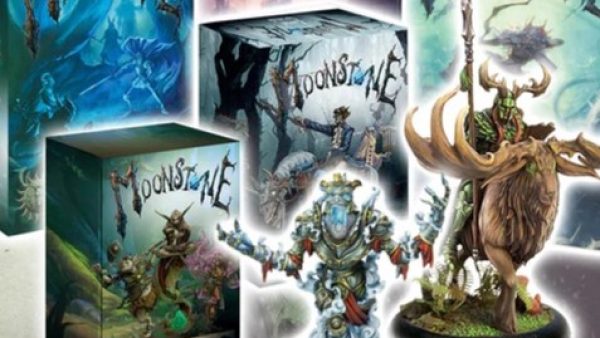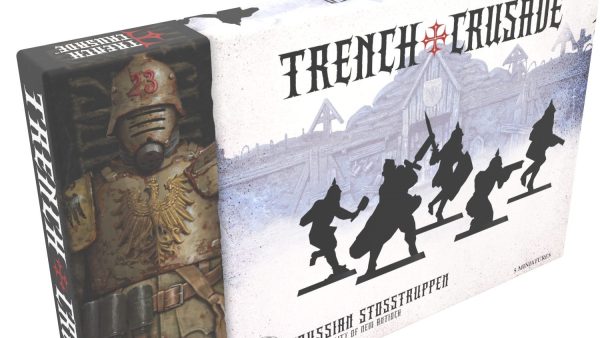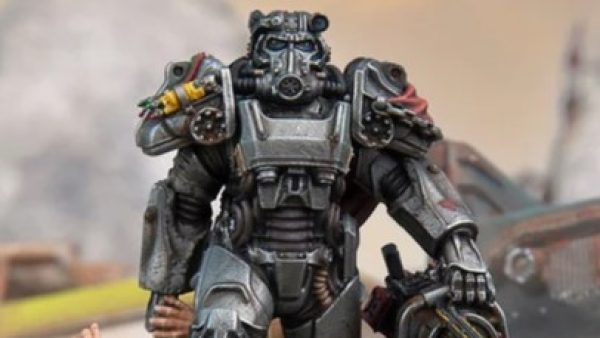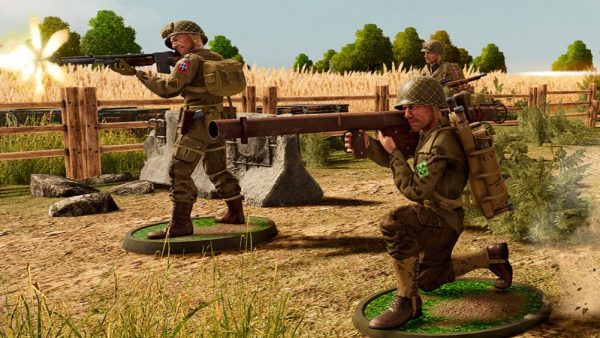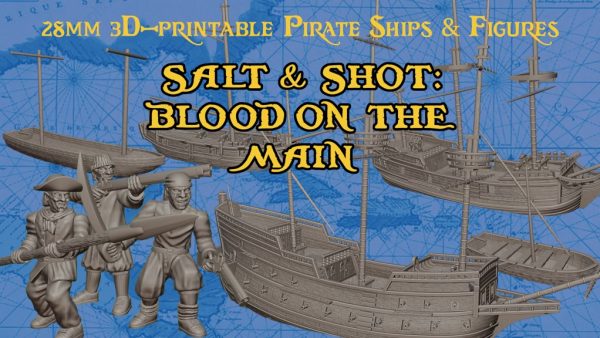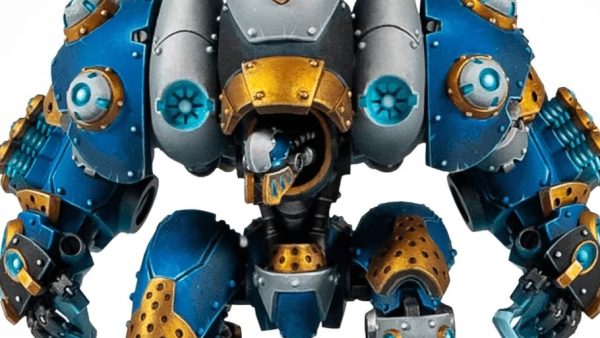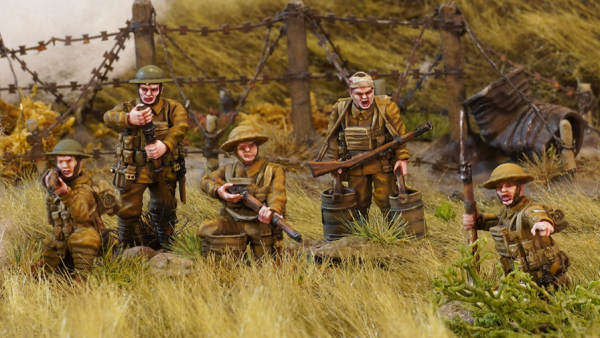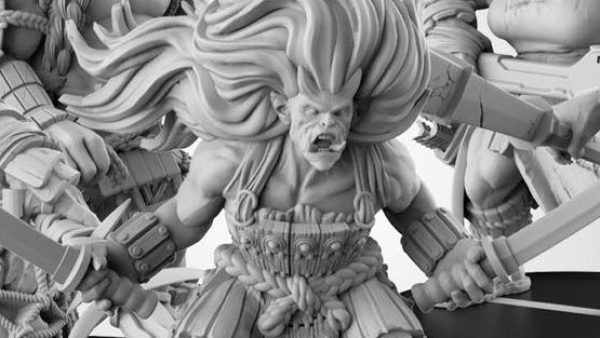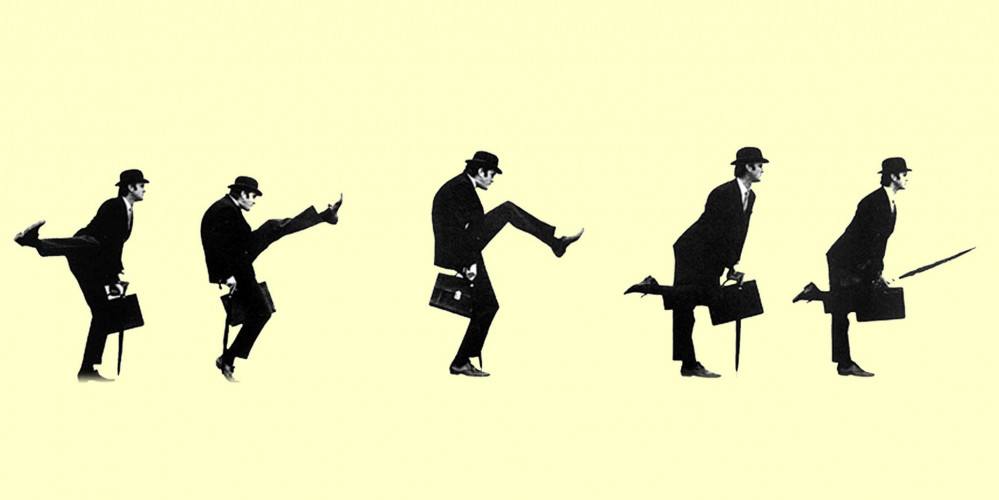
Crazyredcoat’s Crazy Compendium of Collected Creativity
Recommendations: 1479
About the Project
Come one, come all! See the most vaguely inconsistent extravaganza that no one really thinks about but if they did they'd be mildly misanthropic about it! Slow off the heels of my last adventure comes a tale so confusing that it's not even remotely tail-like. Here I will avail you all of the many experiments and miniatures I manage to paint over the coming times, or at least some of them. Time is funny like that... Either way, stay tuned for various projects that don't fit into any one larger project like my last foray into this sort of thing. Oh, and watch out for Spiny Norman.
Related Game: Warhammer Age of Sigmar
Related Genre: General
Related Contest: Spring Clean Hobby Challenge (Old)
This Project is Completed
Purple Hair Pandemonium
So a friend and I have a bit of a running joke with Warhammer II Total War. We accidentally created a character (who’s full name shall not be uttered here), Cosmic. Long story short, Cosmic now appears in every campaign I play in that game. Last time, she was a Dark Elf Supreme Sorceress and their in-game portrait has purple hair.
And I decided; ‘I can do that no problem!’ And here follows the story of my attempt…
First things first, I knew I wanted the roots to be far darker than the tips of the hair. I could have done this with lots of washes (and that may have been faster), but I decided I could do it with Contrast Black Templar. Only problem there is that Contrast needs a brighter base to go over, so I decided that Pink Horror should do… It kind of worked.
Next came the contrast. I’m not sure how much more this added that successive layers of shade wouldn’t have achieved, but this was an experiment after all.
Then I tried to darken down the pink with Druchii Violet.
Purple Hair Pandemonium (cont...)
So I guess there’s an item limit on posts? I got to 12 then couldn’t add any more to the last entry… Ah well… The continuation begins!
Next came more drybrushing moving ever closer to the tips of the hair with ever brighter colours (there was two, I make this sound like a 30 hour marathon paint session…).
And that was that. Worked out nicely, but maybe could have skipped a few steps in the process. Below are some final pics including a painted feather in the hair for a spot of contrast in the work. Only real problem now is that the rest of the mini will be a pain in the proverbials to paint…
The Blanco Problem
A long time ago (well maybe a year or two), I started painting some of my British Bolt Action chaps. Being the uniform buff that I am, I looked into all sorts of stuff and came to the conclusion that the webbing would have been beige in colour…so I painted a whole bunch of my guys like that. Then I read about the blanco they would put on to protect the material from the elements, and that turned the beige webbing into a green colour. A boo-boo had been made. I’ve done a few experiments in the past to fix this, but they were using the stock I had on hand and it just wasn’t the right kind of green. So what to do?
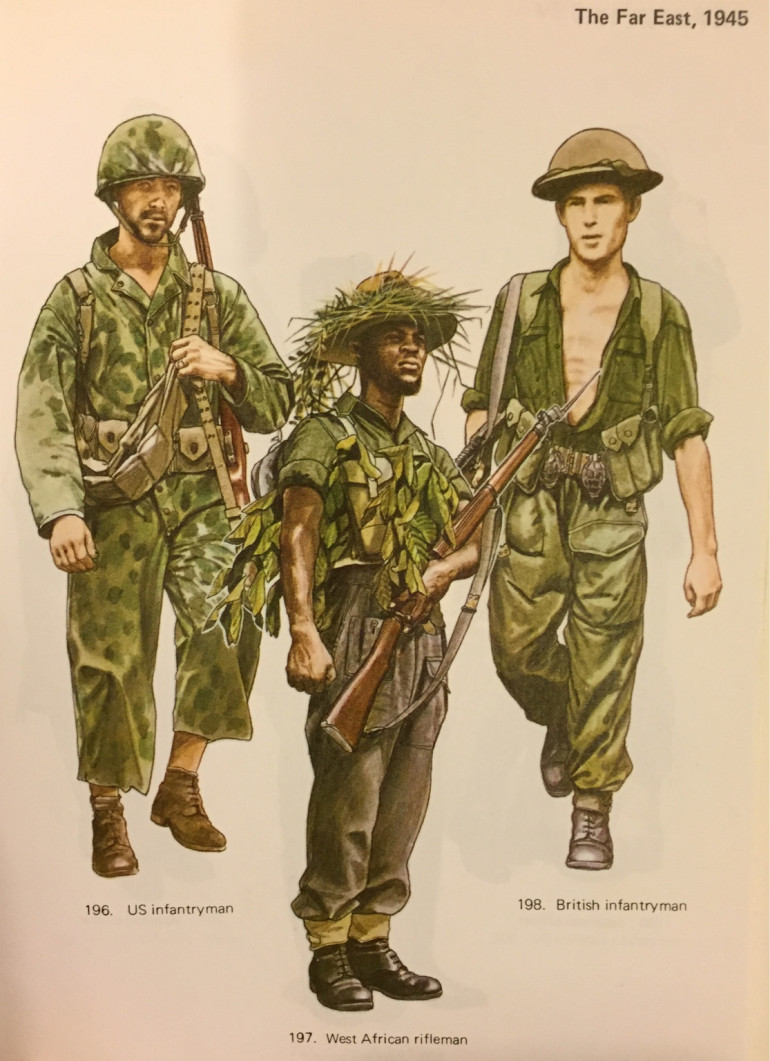 Ignoring the Yank on the left, you can see the colours quite well (this is a definite Osprey image, but the exact book I am unsure of by the by). The slight problem I have is that I have been making my experiments on some troops I am using for the Far East, so the uniform itself is also green, which is a difficult colour to match. Point being, the colour here is more green than brown in hue, so how can I change that on my currently beige minis?
Ignoring the Yank on the left, you can see the colours quite well (this is a definite Osprey image, but the exact book I am unsure of by the by). The slight problem I have is that I have been making my experiments on some troops I am using for the Far East, so the uniform itself is also green, which is a difficult colour to match. Point being, the colour here is more green than brown in hue, so how can I change that on my currently beige minis?The first test was on my 6pdr gun. Now when I painted this originally, the crew were not attched to the base and pulling them off would have been problematic, so I was looking for a simple way to change the colour with little effort. Previous experiments had shown that shades of light colours can do a lot to change a colour quickly, so that was my first test.
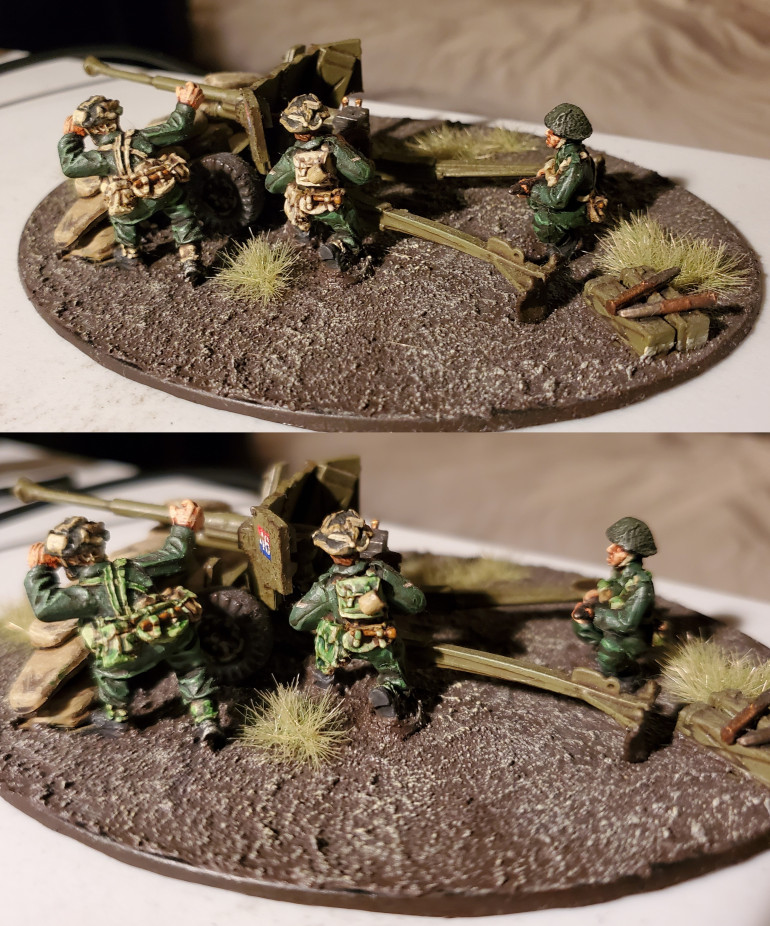 The above picture is the initial colour, the lower is after a coat of Biel-Tan Green over the webbing. It is not perfect, but it is quick and simple. The great advantage to Bolt Action stuff is that a few colour variations don't matter so much as there would have been variations due to application, wear, and manufactoring quality...which helps.
The above picture is the initial colour, the lower is after a coat of Biel-Tan Green over the webbing. It is not perfect, but it is quick and simple. The great advantage to Bolt Action stuff is that a few colour variations don't matter so much as there would have been variations due to application, wear, and manufactoring quality...which helps.The next idea was repainting. For obvious reasons, this is not the most endearing of ideas, but my mini of Maj. James Rutherford-Lumley was fairly well posed to make getting to the webbing not too hard. I do like the colour I got here. In many ways it is a closer uniform colour than the darker green I have here, but I’m going to invoke the ‘colour variation is ok’ from above and also the rule on contrast. There needs to be some difference between the two items to make them stand out. This is subtle here, but would be much less so if I went to 100% accurate colours all round. Imagine the tunics and such are wet.
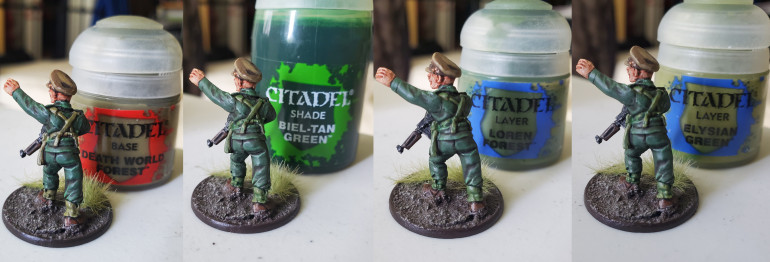 Paint pots are shown for colours at each step. Also accidental Lloyd shots (the webbing is more visiable at this angle). I like the way this looks a bit more than the speedy method, but repainting is going to be tedious...
Paint pots are shown for colours at each step. Also accidental Lloyd shots (the webbing is more visiable at this angle). I like the way this looks a bit more than the speedy method, but repainting is going to be tedious...While the colour is better on the repainted webbing, I do not want to try and redo all my webbing on 15 or so minis, so I will use the shading method to redo (eventually) and stick to the slower method for all new projects, the first of which should be coming soon with a NW Europe theatre Rupert coming shortly! I also really quite like that green for a camo colour, too, so maybe a Panzer IV may make an appearance soon…
The Rupert that Wasn't
So I did say I’d be working on a Rupert, but the mini is actually more of a Sergeant, so we’re going to go with that and I’ve found another mini that I shall get at some point that will be my Rupert. Eventually. I’ve put a lot of time into getting a close colour match for British WW2 uniforms (or WW1 for that matter as the colour was the same or very similar) using the GW range. That is a little trickier than with other ranges because of the names, but Steel Legion Drab is the colour to go with, I find.
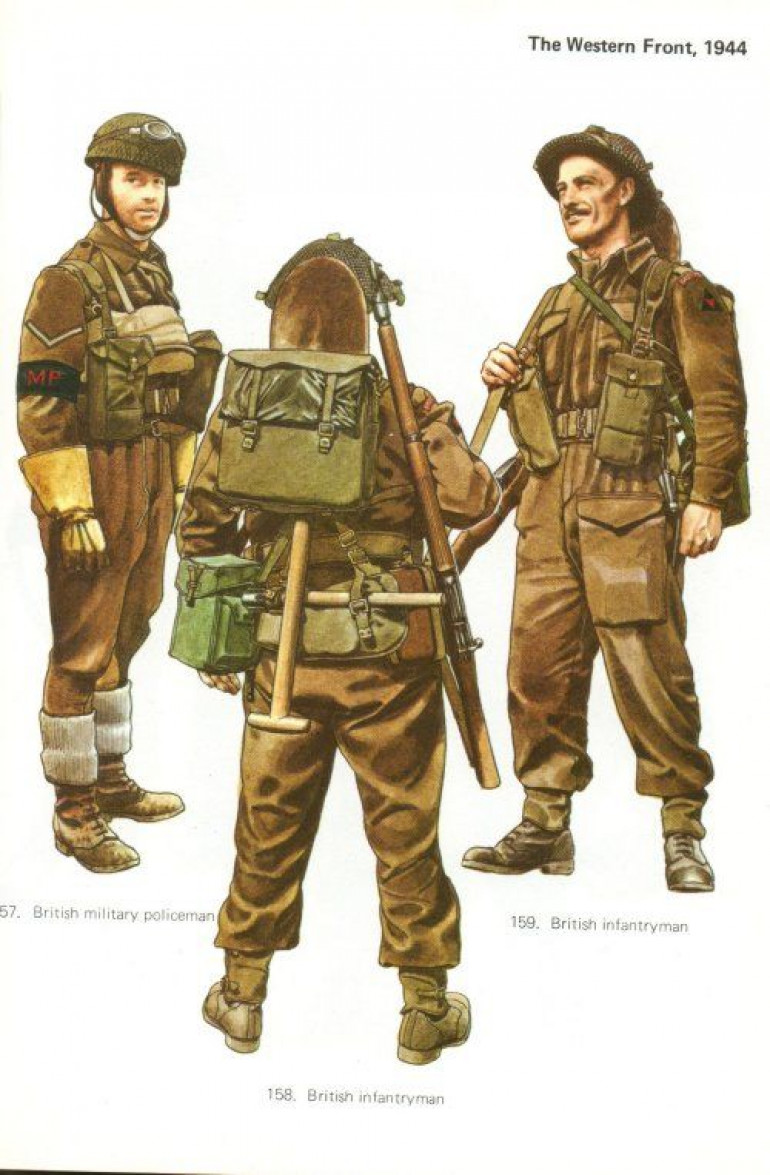 Again, I believe this is from an Osprey book (they are your friends for uniform images!) showcasing the colour I'm aiming for.
Again, I believe this is from an Osprey book (they are your friends for uniform images!) showcasing the colour I'm aiming for.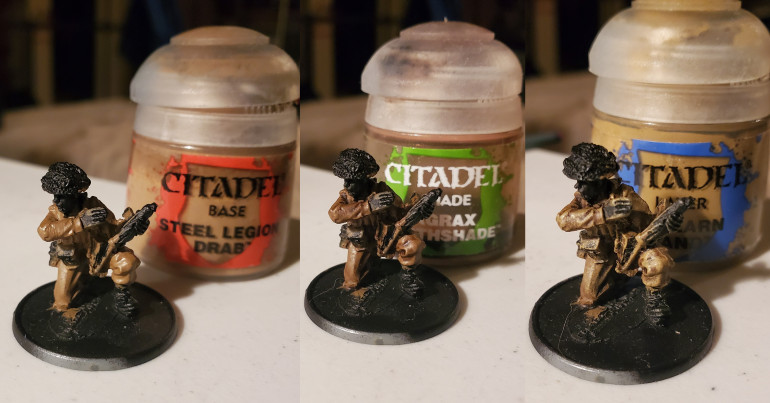 Just a simple base/shade/drybrush here, but you can clearly see why the Germans in WW1 claimed the Brits were impossible to see in the mud, while the French were easy to spot.
Just a simple base/shade/drybrush here, but you can clearly see why the Germans in WW1 claimed the Brits were impossible to see in the mud, while the French were easy to spot.As a final aside here, the main reason this chap is a Sergeant more than an officer is his pack. Officers, in my research, were not issued with packs, though I am sure many of them on prolonged engagements were happy to lug around some extra stuff where the need was there, plus it would have helped them blend into their men (which helps with being shot first). Just an interesting tit-bit I thought I’d throw in.
Sergeant, 1st Battalion, Royal Hampshire Regiment. NW Europe, 1944
The finished piece. This chap has been primed for years just sitting on a shelf, so I’m glad he’s finally done. Very pleased with how he turned out and the only odd thing is the eyes being REALLY deep, but that was the sculpt more than anything.
The One-Eyed Wanderer
The next mini I’m working on is something that it a little more personal for me, in a weird way. I don’t recall where this mini came from as he was given to me by my brother a year or so ago. However, Nordic Mythology, and Scandinavia in general, are rather dear to me, so I really wanted to make a good job of the Lord of Valhalla.
The Allfather Returns!
Odin is now finished! I am very happy with how he turned out. Just a few more reference ideas before I get to the finished piece. Muninn and Huginn were a little difficult to achieve as looking ‘real’ while not just looking like black blobs on his shoulders. I ended up looking at raven photos online and found that the sun can give them a brown tint, which I think I’ve achieved.
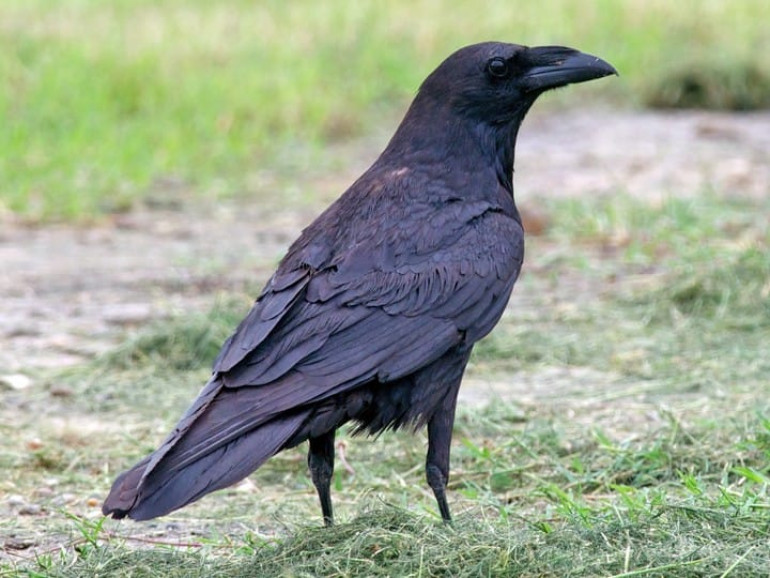 I think the brown colour here is more to do with the sunlight, so I only put the brown on the upper sides of the ravens where the sun would strike.
I think the brown colour here is more to do with the sunlight, so I only put the brown on the upper sides of the ravens where the sun would strike.The other tell-tale sign that this is the Allfather is that of Gungnir, Odin’s spear. Using some of the other references images for Viking Spears I just decided to go with a dark wood of an old spear. Many of the images show Odin as more of a Gandalf figure, which I wanted to avoid. I really wanted him to look like a normal old man wandering the fjyørds of Norway, which I think I’ve achieved quite nicely.
And now the Lord of the Æsir, husband of Frigg, in all his humble glory!
Jerry appears to have fallen out of his plane!
Next up is a Luftwaffe Officer! I have rather a lot of German Officer models lying around here and there so I thought I may as well experiment with different branches and colours (you may see a Sturmgeschutz Officer appear at some point…). Of course when dealing with historicals it never hurts to do a bit of research (see ‘The Blanco Problem’ below…) and so a bit of research was done!
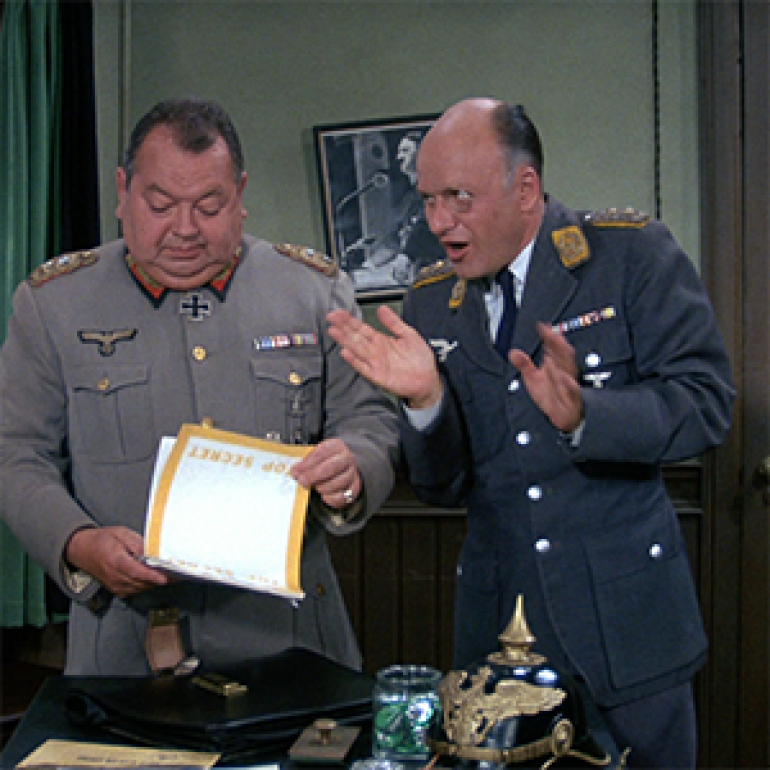 Very historical research, as you can see! Jokes aside, Hogan's Heroes actually seems to have gotten the uniforms of Klink and Schultz pretty well, even if there are some minor issues such as Norwegian/Danish rifles... (We could argue that they are Stomperud Krags, I guess.)
Very historical research, as you can see! Jokes aside, Hogan's Heroes actually seems to have gotten the uniforms of Klink and Schultz pretty well, even if there are some minor issues such as Norwegian/Danish rifles... (We could argue that they are Stomperud Krags, I guess.) The general colours of Officers and ORs in the Luftwaffe are the same, and this (almost certainly Osprey) art nicely agrees with the colour of Klink's uniform which is always useful. Made my initial choice of The Fang from GW my final choice after double checking.
The general colours of Officers and ORs in the Luftwaffe are the same, and this (almost certainly Osprey) art nicely agrees with the colour of Klink's uniform which is always useful. Made my initial choice of The Fang from GW my final choice after double checking.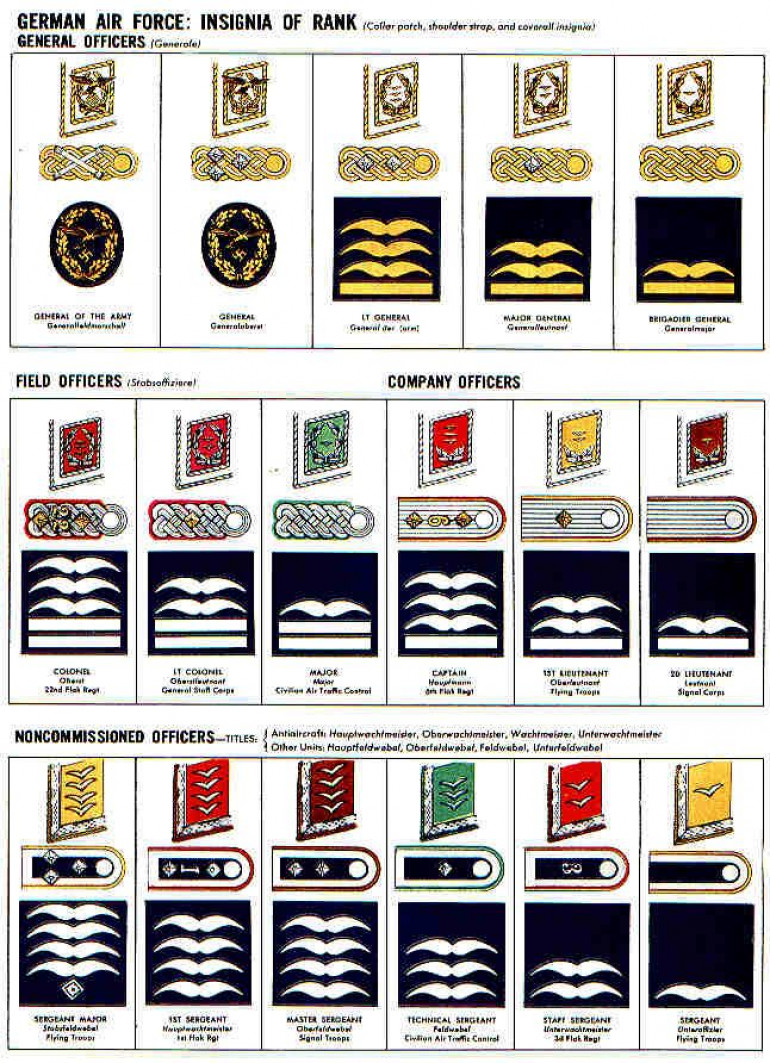 I decided that I wanted a Junior Officer, so the badges that Klink, the Iron Colonel, wore were not going to cut it. It actually took me a while to find a reference image I was confident in here, but this one served well enough and explains the white epaulettes that I went with in the end.
I decided that I wanted a Junior Officer, so the badges that Klink, the Iron Colonel, wore were not going to cut it. It actually took me a while to find a reference image I was confident in here, but this one served well enough and explains the white epaulettes that I went with in the end.Some final notes before we get to the mini himself, starting with the helmet. Normally, the Luftwaffe would wear helmets in the same blue-grey as their uniforms, or they would camouflage the helmets like the Heer. For some reason, I decided that I wanted an un-camoed (I swear it’s a technical term) helmet then discovered that I didn’t have the right badge for the side…so I decided that this chap accidentally forgot his helmet when he showed up to the front, so the local quartermaster just gave him an old helmet from the stores. It probably happened once, right?
Secondly is the brown leather. As the artwork of the OR above shows the belting in the black leather it might seem odd, but he is a member of the Luftwaffe Feld Divisions which we, later in the war, equipped by the Heer and so had a lot of the same kit. However, a lot of images of Luftwaffe Officers show brown leather, that I wanted to replicate for a bit of contrast and to add just that bit more to the idea that this poor chap arrived at the front thinking he would be in a plane only to be told that there’s not enough of them and he has to use this MP40.
Anyways…ON TO THE MINI!





























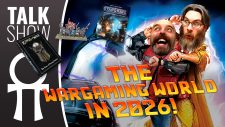

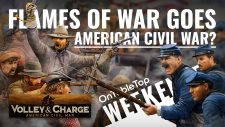
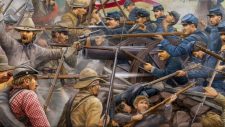

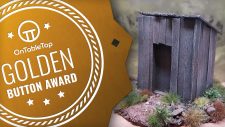

![Very Cool! Make Your Own Star Wars: Legion Imperial Agent & Officer | Review [7 Days Early Access]](https://images.beastsofwar.com/2025/12/Star-Wars-Imperial-Agent-_-Officer-coverimage-V3-225-127.jpg)




